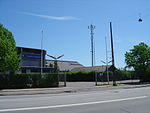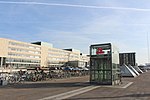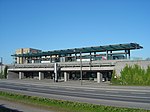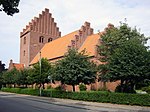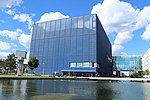Boldklubben Fremad Amager (meaning in English: The Ball Club Forward Amager ; abbreviated Fremad A) is a Danish professional football club based in the district of Amager Vest, Copenhagen. As of the 2020–21 season, the club's senior men's team play in 1st Division, the second-tier of professional football in the country. The club consists of an amateur department and a professional section, that is wholly owned by Fremad Amager Elite ApS – a private limited company created on 2 December 2013, initially with 80/20% ownership split between the new investors and the remaining 20% by the members – and small portion by the club's amateur department. The club have primarily played their home games at Sundby Idrætspark since the stadium's inauguration in 1922. Fremad Amager's last spell in the highest football league in Denmark was in the autumn of 1994. Ever since the first participation in the first nationwide league tournament in 1927, and subsequent promotion in 1929, the club has spent the majority of its history – with the exception of two seasons – in the different divisional structures (known as "Danmarksturneringen i fodbold"). The club reached the Danish Cup final in 1971–72 season while playing at the second highest league level, but lost against Vejle BK, who had also won the Danish championship in 1971. As a result, BK Fremad Amager participated in the 1972–73 European Cup Winners' Cup, but did not advance beyond the first round.The club was co-founder of the representative team Fodbold-Alliancen in 1940 and remained a member until 1949, when they switched to the competing representative team Stævnet and stayed with the football combination for a total of 25 years (1949–1954 and 1959–1979) until it ceased to exist in 1979. On 1 July 2008, the club participated in the formation of the superstructure FC Amager together with neighbouring clubs Dragør BK, Kastrup BK and Kløvermarken FB. The merger was short-lived. After only 8-month of existence, the merger club went bankrupt on 30 March 2009 at the start of second half of the 2008–09 season, with Fremad Amager hence experiencing a third bankruptcy in its history – the highest number of bankruptcies by any Danish football club; the first being on 22 November 1984 and the second on 13 November 1990. The league licence, that the merger team was playing under, was returned to Fremad Amager, who was relegated to the lower ranking regional football league, Copenhagen Series, shortly before the club's 100 years anniversary. Being described as a working class team, the Sundbyvester-based club enjoy long-standing rivalries against neighbouring clubs BK Frem, Kastrup BK and B 1908.


